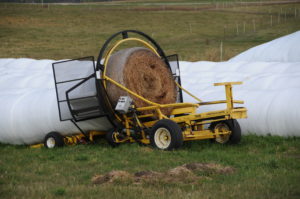If you commit to taking the additional step in covering your freshly chopped forage, it corresponds to saving essential  nutrients as well as dry matter in your feeds, not to mention the fact that it leads to its better quality. More importantly, silage covering leads to better digestion and will prevent health issues on your livestock. Simply put, you save money because you minimise loses plus you end up with better efficiency in production.
nutrients as well as dry matter in your feeds, not to mention the fact that it leads to its better quality. More importantly, silage covering leads to better digestion and will prevent health issues on your livestock. Simply put, you save money because you minimise loses plus you end up with better efficiency in production.
To maximise the benefits of SilageWrap.com.au – Silage Covers, you must adhere to these following principles:
1 – Do not forget to cover the soonest time possible after the process of cutting. The purpose is to help in creating the ideal anaerobic environment for your silage. Some animal farm owners and producers do not value this step, but it means a lot, especially when it comes to long-term efficiency in production.
2 – It is not a smart idea to neglect or ignore the quality or the thickness of the cover. Although you expect to spend more money on a premium quality silage cover, you end up saving in the long run, thanks to improvedsilage quality. If you are using plastic cover, it must be at least 5mm thick and should ideally contain dual layers, usually made of a black inner layer and white outer layer for better resistance to deterioration.
3 – Industry experts recommend that you must cover the whole slope at the front of the bunker or the one around the drive over pile using plastic once you complete the filling. The purpose of the procedure is to successfully prevent the likelihood of spoilage in areas where it is challenging to pack.
4 – You also must ensure that there is enough weight along the edges so that you can effectively keep the plastic in place. It also serves as a practical method of preventing the possibility of air entering or penetrating the SilageWrap.com.au – Silage Covers. Some smart farm owners will apply the technique of overlapping the seams of a couple of different sheets of cover with about four feet. Like traditional covering and storage, you should put in the effort to put weight on the cover. The ideal weight options are gravel in bags and old tires.
Finally, make it a point to regularly inspect the silage covers, the purpose of which is to see if there are noticeable damages or tears. If you know the damage, you cannot ignore it; in fact, even the smallest tear is enough to call your attention. If you want to avoid losses, fix the damage or tear right away. Keep in mind that covering and sealing silage with utmost efficiency will not just prevent losses, but also allow you to produce a premium quality product.